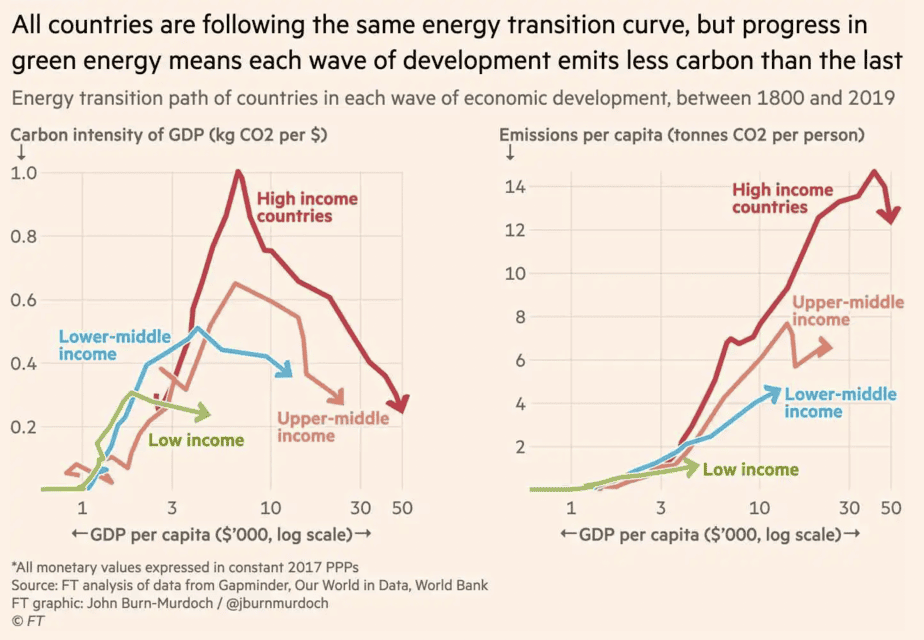Der Kapitalismus wird das Klima retten
Es ist ja besonders in Deutschland populär, über Verzicht im Alleingang das Klima zu retten. Bringt wenig, wird keine Nachahmer finden und ist auch unnötig. Wie immer wird es der menschliche Erfindungsgeist sein, der das Klima rettet und wer da nicht mitmachen möchte, der verliert.
Die FINANCIAL TIMES (FT) zeigt es in einem Beitrag:
- „Speaking at the COP26 summit last year, Richa Sharma, leader of the Indian delegation, was quick to emphasise that India had a right to burn fossil fuels, telling delegates: “The meagre carbon budget is first and foremost the right and entitlement of developing countries.” – bto: Das ist klar, weshalb es auch so unrealistisch ist, diesen Ländern zu raten, auf fossile Brennstoffe zu verzichten.
- „This emphasis on allocating the bulk of remaining ‘carbon space’ to countries that have not yet reaped the benefits of years of fossil-fuelled economic growth is central to the climate justice movement. But all such good intentions are rapidly being overtaken by simple economics.“ – bto: weil die Antwort eben nicht in Verzicht, sondern in Technologie liegt.
- „In 2009, coal was still an attractive option for countries looking for affordable energy, its average costs coming in well below renewables. (…) In response, India’s appetite for coal has quickly waned. In 2019, the International Energy Agency forecast that the country’s installed capacity of coal would grow by around 80 per cent between 2018 and 2040. A year later, they revised that to just 10 per cent.“ – bto: Das ist eine erfreuliche Entwicklung, die Frage wird nur auch in Indien sein, wie die Speicherfrage gelöst wird.
- „(…) starting in the 1980s with the advent of nuclear power, it became increasingly common to see countries cutting emissions while growing GDP. The pace of this decoupling has now accelerated as the shift from carbon-intensive manufacturing to services and from dirtier to relatively cleaner fossil fuels has been supercharged by proliferating cheap renewables.“ – bto: Der Autor begeht den Fehler, die Grenzkosten zu betonen und den Rest auszublenden.
- „In 2016, 70 countries — more than one in three worldwide — had a run of at least five years in which carbon emissions declined while GDP grew. Green growth is already here.“ – bto: wohl auch, weil wir Emissionen nach China outgesourct haben …
- „While developing countries do follow an environmental Kuznets curve, where the carbon-intensity of GDP increases before falling away again, each successive cohort traces a cleaner path than the last. At the dirtiest point on their energy transition, countries industrialising back in the 19th century had to emit roughly 1kg of CO₂ for every dollar of GDP they produced in today’s money. The next generation, who industrialised around 50 years later, achieved the same level of development but only had to burn 0.65kg per dollar along the way. The third, China’s cohort, topped out at 0.5kg, and the final group — primarily countries in Africa and south Asia — are already moving to the downward, greener slope of the transition, having peaked at just 0.3kg per dollar.“ – bto: Die Technologie lohnt sich.

- „(…) we should welcome the fact that investment, innovation and market forces are driving green growth and falling emissions.“ – bto: Das sehe ich genauso.







